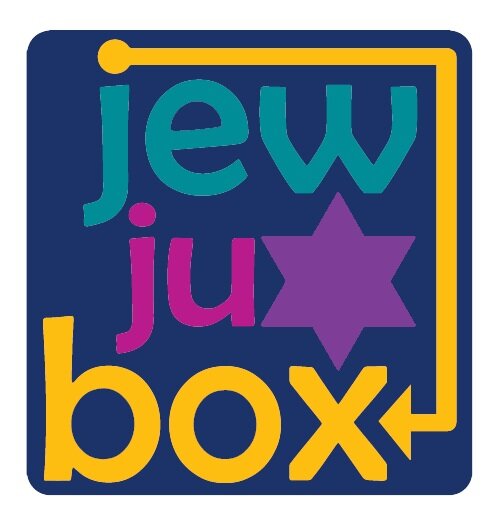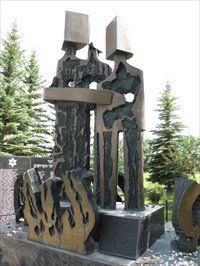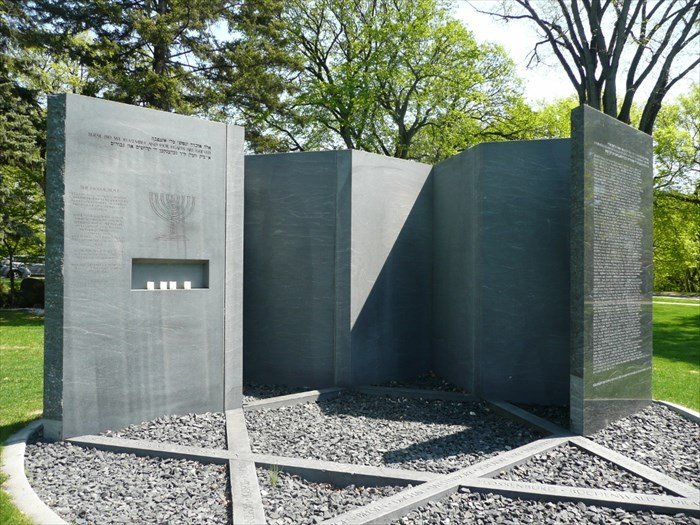Wherever you go in Western Canada there may be something Jewish
This summer, we’re updating and re-printing some posts from our old website. This one was first posted in July, 2019, on our old website.
Ellen writes:
This is the first of a series of blogs about interesting Jewish places to see in Canada. Full disclaimer – I haven’t actually visited most of these, but I’ve done the virtual poking around, so you don’t have to! Feel free to print and tuck this into your Simply Shabbat bag!
Plaques, Markers, and Statues in Western Canada
It’s officially Summer! Are you planning to travel in Canada this summer? Wouldn’t it be cool if there were a website that told you all the places, large and small, of Jewish significance in Canada? That way, while you travel, if you were so inclined, you could just nip over for a bit of Jewish history.
Well, there’s not. Or if there is, it’s well-hidden. Or if it’s not well-hidden, I just couldn’t find it.
What there are, though, are some very cool websites that will direct you to interesting Jewish places.
One really good way to see some Jewish heritage sites, wherever you are, is to find those historical plaques and markers that give you a little snippet of history. Here are a few that might make for an interesting stop while you’re in the area.
**You’ll find the urls for the databases I found at the end of this blog, in case you are interested in other historical markers as well**
British Columbia
Congregation Emanu-El Temple, in Victoria, is the oldest surviving Synagogue in Canada, and it’s a National Historic Site.
It was established during the Gold Rush, and you can find it at 1461 Blanshard Street, Victoria, British Columbia. It’s a Conservative, egalitarian synagogue, so you can worship there. The home page has links to synagogue tours and to a walking tour; in the spirit of these times, they’re by prior arrangement only.
Vancouver has a number of places of interest:
In Stanley Park, there is a statue (bust) of David Oppenheimer, who was Vancouver’s sitting mayor when the park opened. Oppenheimer was Vancouver’s second mayor, and its first Jewish mayor.
There is a plaque on the Marine Building at 335 Burrard Street recognizing Leon Joseph Koerner. He fled Nazi occupation, and once in Vancouver, he was responsible for innovations in the forestry industry, and for a charitable foundation for arts, education, and social programs.
There is also a plaque marking the location of Vancouver’s first synagogue, the Sons of Israel synagogue, at 700 E Pender St. The congregation was established in the late 1880’s, and built Vanouver’s first permanent synagogue in 1917. The congregation moved in 1948, and the sanctuary became a gymnasium. It was converted to condominiums in the 1880’s.
A plaque marking the original Jewish community centre can be found by the front door at 2675 Oak St. in Fairview, Vancouver. The building was originally called Construction House.
Alberta
There are two places you may want to stop at in Calgary, and another two in Edmonton.
Outside the Calgary JCC at 1607 90 Ave SW, there is a Holocaust memorial sculpture called Ashes to Life. It was created by Roy Leadbeater and installed in 1986.
Also in Calgary, there’s a plaque at the Erlton Jewish Cemetery, on Erlston Street SW, about the Chevra Kadisha of Calgary. The plaque tells the sad story of how and why the cemetery was established in 1904.
In Edmonton, there is a Holocaust memorial at 96 Ave NW, near the Alberta Legislature. The memorial was installed in 2003.
Just last year, the first statue of Anne Frank in Canada was installed in Light Horse Park. It is a gift from the Dutch Canadian Club in Edmonton and is a replica of one that stands in Utrecht, Netherlands.
Saskatchewan
While Saskatoon boasts a few places where important Jews lived or worshipped, there is not much in the way of plaques in the capital city.
West of Rocanville, near Barish Lake, there is a cairn to honour Jewish farmers of Barish Lake, who settled there between 1886 and 1907. There is a list of these Jewish pioneers of the area. It was the first successful Jewish farm settlement in Canada.
East of the town of Bienfait, halfway between Estevan and Frobisher on Highway 18, you’ll find a plaque marking the establishment of the Hirsch Colony in 1892. The plaque reads, in part, “These colonists were motivated by a keen desire to escape religious persecution and racial discrimination, with the rights to own and farm their land and freely adhere to their Orthodox Faith.”
Manitoba
In Winnipeg, there are several stops you might like to make:
You’ll find a Holocaust Memorial outside the Manitoba Legislature at 450 Broadway.
On the Second Floor of the legislature, opposite Legislative Library, you’ll find a plaque commemorating the bicentenary of Jewish settlement in Canada. It was presented by the Canadian Jewish Congress in 1959.
The Asper Jewish Community Campus is the home of a National Historical Person portrait for Israel Isaac Kahanovitch, who “Transcended religious and secular Jewish factions to become a community leader throughout the Prairies,” according to Parks Canada. There is no plaque, but there seems to be a portrait, and a plaque may be in the offing.
At Bannatyne Avenue and King Street, there is a plaque dedicated to Abraham Albert Heaps, who “Played a key parliamentary role in the introduction of social welfare legislation that supported core Canadian values.”
In Bender, about 100 km north of Winnipeg, there’s a monument and plaque marking the establishment of the first Jewish farm colony in 1903. The hamlet and colony are named after its founder, Jacob Bender. It was abandoned by 1927, but a small cemetery and the remains of some buildings still stand.
At the Bethel Heritage Park in Winkler, there is a monument to the first 15 Jewish families to who settled in the town in the early 1900’s, joining the Mennonites who had established the town in 1876.
At the Lions’ Park in Oakburn, you will find a plaque dedicated to Nathan Unickow. Here’s what the Manitoba Historical Society has to say about him: “Born at Pavelich, Ukraine around 1904, he trained as a rabbi at the Hebrew seminary there before emigrating to Canada in 1921. He operated a general store at Oakburn, Manitoba from 1926 to his death. Known for his kindness and generosity, he offered credit to many customers experiencing difficult times, especially during the Great Depression of the 1930s. A devout man, he was active in the Rosh Pina Synagogue and the Chevra Mishnayes Synagogue. Unickow died on 24 February 1976.”
I found these sites by using the search terms “Jewish”, “Jew”, and “synagogue” in the following websites. They’re all great and interesting sites, where you might want to poke around to find landmarks of interest to you.
Waymarking, where people share markers they find with the Waymarking community. http://www.waymarking.com/
Parks Canada Directory of Federal Heritage Designation: https://www.pc.gc.ca/apps/dfhd/default_eng.aspx
Vancouver’s Places that Matter Community History Resource: https://www.vancouverheritagefoundation.org/places-that-matter/
Manitoba Historical Society:
http://www.mhs.mb.ca/index.shtml
Happy travels! N’siyah Tova!






